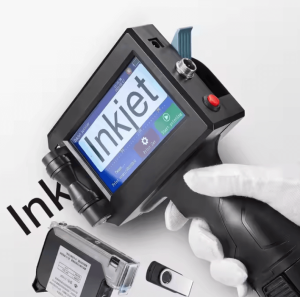
Handheld barcode printers offer portability and flexibility for printing labels in retail, logistics, healthcare, and field operations. This guide covers every critical step, with technical insights and best practices.
Table of Contents
Toggle1. Printer & Barcode Standard Selection
Key Considerations:
- Printer Type: Choose between thermal transfer (durable labels) or direct thermal (short-term labels).
- Barcode Standards:
- 1D Barcodes: UPC-A (retail), Code 39/128 (logistics)
- 2D Codes: QR Code (URLs), Data Matrix (small items)
- Connectivity: Bluetooth/Wi-Fi for mobile use, USB for desktop pairing.
2. Data Preparation & Formatting
Step-by-Step:
- Input Data: Ensure accuracy (e.g., GTIN-12 for UPC-A requires 12 digits).
- Software Options:
- Built-in printer apps (e.g., Brother P-touch Editor)
- Third-party tools (NiceLabel, BarTender Mobile)
- Data Validation:
- Use check digits (e.g., MOD 10 for EAN-13).
- Avoid special characters in Code 128 unless using FNC4 encoding.
3. Barcode Design Guidelines
| Parameter | Specification |
|---|---|
| Minimum Height | 15% of total width (ISO/IEC 15416) |
| Quiet Zone | 10x module width (left/right of barcode) |
| Human-Readable Text | Font size ≥ 8pt, positioned below |
| Resolution | 203 DPI (standard), 300 DPI (high-detail) |
Pro Tip: Use vector-based design tools to prevent pixelation.
4. Printer Configuration
Connection Methods:
- Bluetooth:
- Enable pairing mode on printer
- Add device via OS settings (max range: 10m)
- Wi-Fi:Wi-Fi SetupClick to open artifact
Media Loading:
- Match label width to printer specs (common sizes: 1″×2″, 2″×4″)
- Adjust feed mechanism for tag spacing (gap/black mark detection)
5. Printing Process
- Test Print: Use plain paper first to verify layout
- Batch Printing:
- CSV import for sequential numbering (e.g., INV0001 to INV1000)
- Database integration via ODBC
- Quality Check:
- Verify with a scanner (minimum ANSI C grade)
- Inspect for voids/smudges (thermal printheads ≥ 200°C)
6. Troubleshooting Common Issues
| Problem | Solution |
|---|---|
| Faded Print | Clean printhead with isopropyl alcohol |
| Misaligned Labels | Calibrate sensor (refer to printer manual) |
| Data Mismatch | Check CSV encoding (UTF-8 recommended) |
| Connectivity Drops | Update firmware & reset network settings |
7. Advanced Applications
- Variable Data Printing: Link to SQL databases for real-time inventory updates
- RFID Integration: Encode UHF tags (860-960 MHz) for pallet tracking
- Compliance Labeling: Include regulatory info (e.g., FDA UDI for medical devices)
Maintenance Schedule
| Task | Frequency | Tools Needed |
|---|---|---|
| Printhead Cleaning | Weekly | Lint-free swabs, IPA |
| Roller Inspection | Monthly | Compressed air |
| Firmware Update | Quarterly | Manufacturer’s utility |
| Full Calibration | Annually | Manufacturer test sheet |
Best Practice: Store labels at 15-25°C/40-60% RH to prevent adhesive degradation. Always keep spare ribbons/printheads for critical operations.
4.8/5 - (169 votes)
